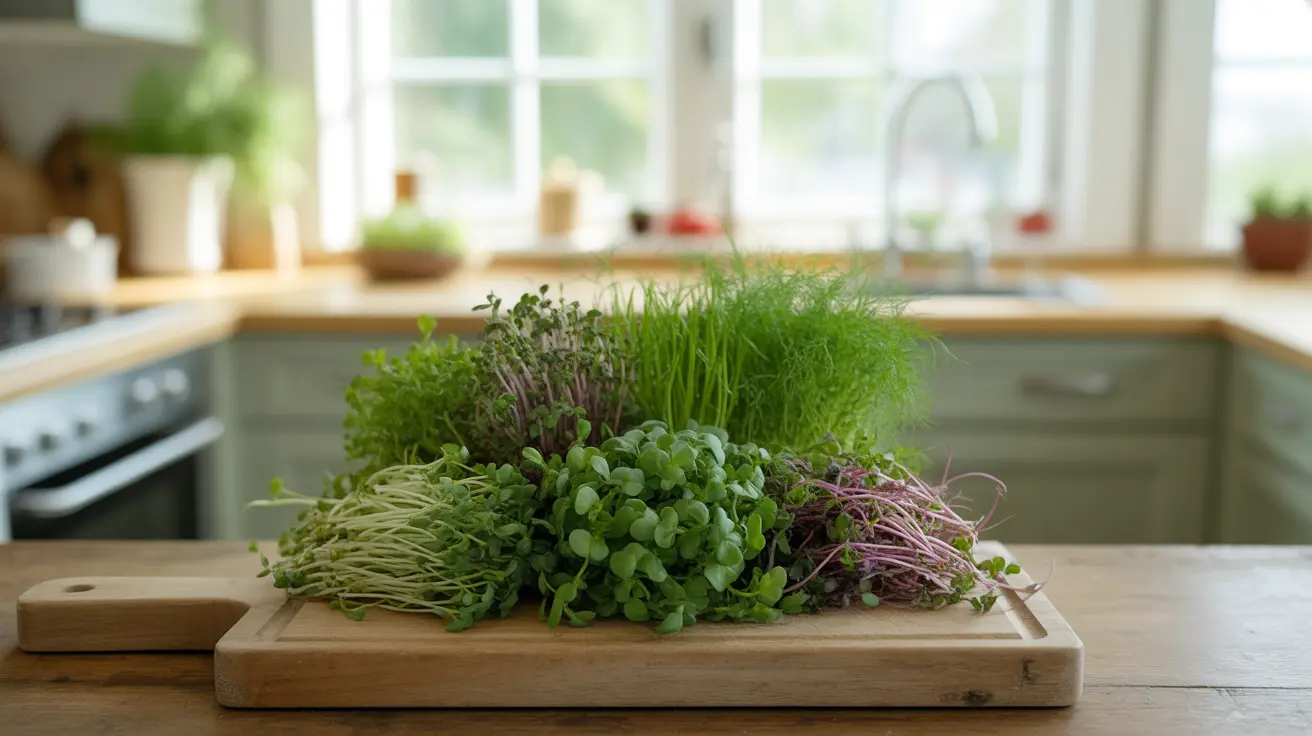Microgreens have emerged as a nutritional powerhouse in the health food scene, offering an incredible concentration of vitamins, minerals, and antioxidants in their tiny leaves. These young seedlings of vegetables and herbs are harvested just after their first true leaves develop, typically within 7-14 days of germination, and pack significantly more nutrients than their fully-grown counterparts.
Understanding the remarkable benefits and versatility of microgreens can transform your approach to healthy eating and nutrition. From supporting heart health to managing blood sugar levels, these miniature greens offer substantial health advantages worth exploring.
Understanding Microgreens and Their Nutritional Profile
Microgreens are essentially the juvenile versions of familiar vegetables, herbs, and greens. Unlike sprouts, which are eaten whole (including the roots), microgreens are cut above the soil line when harvested. Common varieties include broccoli, radish, kale, sunflower, and pea shoots.
Research has shown that microgreens can contain up to 40 times more nutrients than their mature counterparts. This concentrated nutrition makes them an excellent addition to a healthy diet, particularly for those looking to maximize their nutrient intake from plant-based sources.
The Most Nutrient-Rich Microgreen Varieties
Some microgreens stand out for their exceptional nutritional content:
- Red cabbage microgreens (high in vitamin C and antioxidants)
- Cilantro microgreens (rich in beta-carotene and lutein)
- Sunflower microgreens (packed with protein and healthy fats)
- Radish microgreens (excellent source of vitamin E and antioxidants)
- Pea shoots (high in vitamin C and folate)
Blood Sugar Management and Diabetes Benefits
Microgreens can play a valuable role in blood sugar management. Their high fiber content helps slow down digestion and sugar absorption, while their concentrated antioxidants may help improve insulin sensitivity. Broccoli microgreens, in particular, contain compounds that can help reduce blood glucose levels.
Heart Health and Cardiovascular Benefits
The cardiovascular benefits of microgreens are particularly noteworthy. These tiny greens are rich in polyphenols and other antioxidants that can help:
- Reduce inflammation
- Lower blood pressure
- Improve circulation
- Decrease bad cholesterol levels
- Protect against oxidative stress
Growing Microgreens at Home
Growing microgreens at home is surprisingly simple and cost-effective. You'll need:
- A shallow container with drainage holes
- Quality potting soil or growing medium
- Microgreen seeds
- Adequate lighting (natural or grow lights)
- Good ventilation
The growing process is pesticide-free and can be completed entirely indoors, making it a safe and sustainable way to ensure a constant supply of fresh, nutrient-dense greens.
Frequently Asked Questions
What are the health benefits of eating microgreens compared to mature vegetables? Microgreens contain up to 40 times more nutrients than mature vegetables, offering concentrated levels of vitamins, minerals, and antioxidants. They provide these benefits in a smaller serving size, making them an efficient way to boost nutrition in your diet.
How do microgreens help in managing blood sugar and diabetes? Microgreens help manage blood sugar through their high fiber content, which slows digestion and sugar absorption. They also contain compounds that may improve insulin sensitivity and help regulate blood glucose levels, particularly beneficial for people with diabetes.
Which microgreens are richest in vitamins, minerals, and antioxidants? Red cabbage, cilantro, sunflower, radish, and pea shoot microgreens are among the most nutrient-dense varieties. Red cabbage microgreens are particularly high in vitamin C and antioxidants, while sunflower microgreens offer excellent protein content.
Can I grow microgreens at home easily and safely without pesticides? Yes, microgreens can be grown safely at home without pesticides. They require minimal space, basic supplies (container, soil, seeds, and light), and can be harvested within 7-14 days. Indoor growing conditions make pesticides unnecessary.
How can microgreens support heart health and reduce the risk of cardiovascular disease? Microgreens support heart health through their high concentration of polyphenols and antioxidants, which help reduce inflammation, lower blood pressure, improve circulation, and decrease bad cholesterol levels. Their nutrient density makes them particularly effective for cardiovascular health maintenance.




